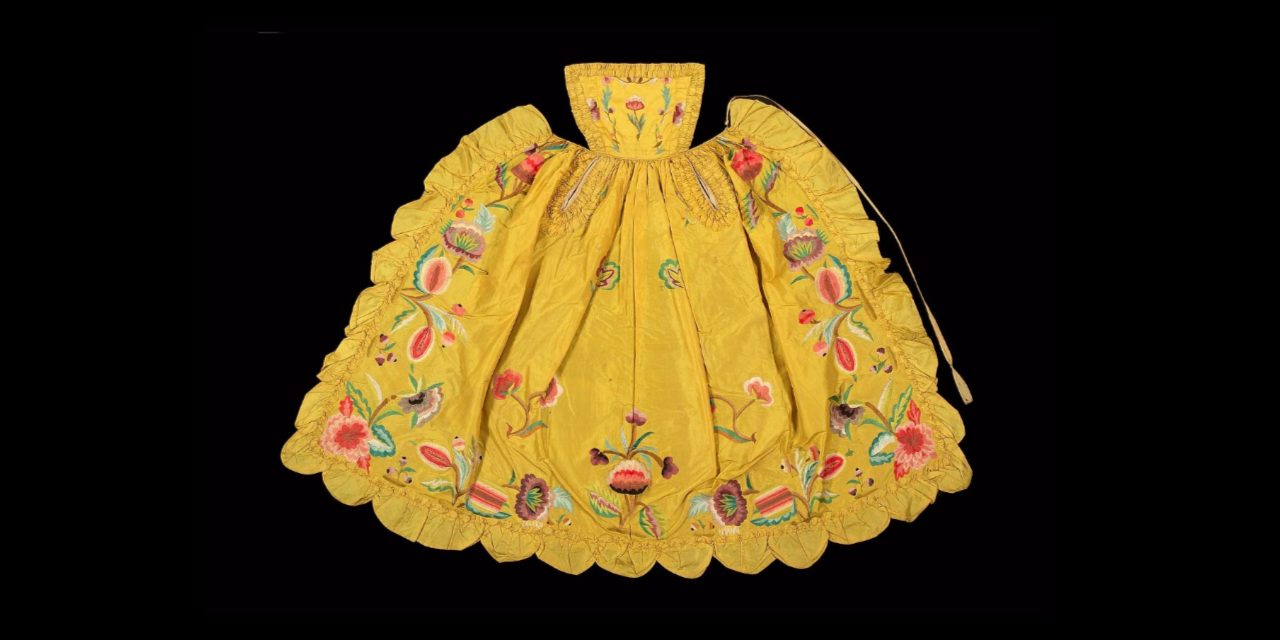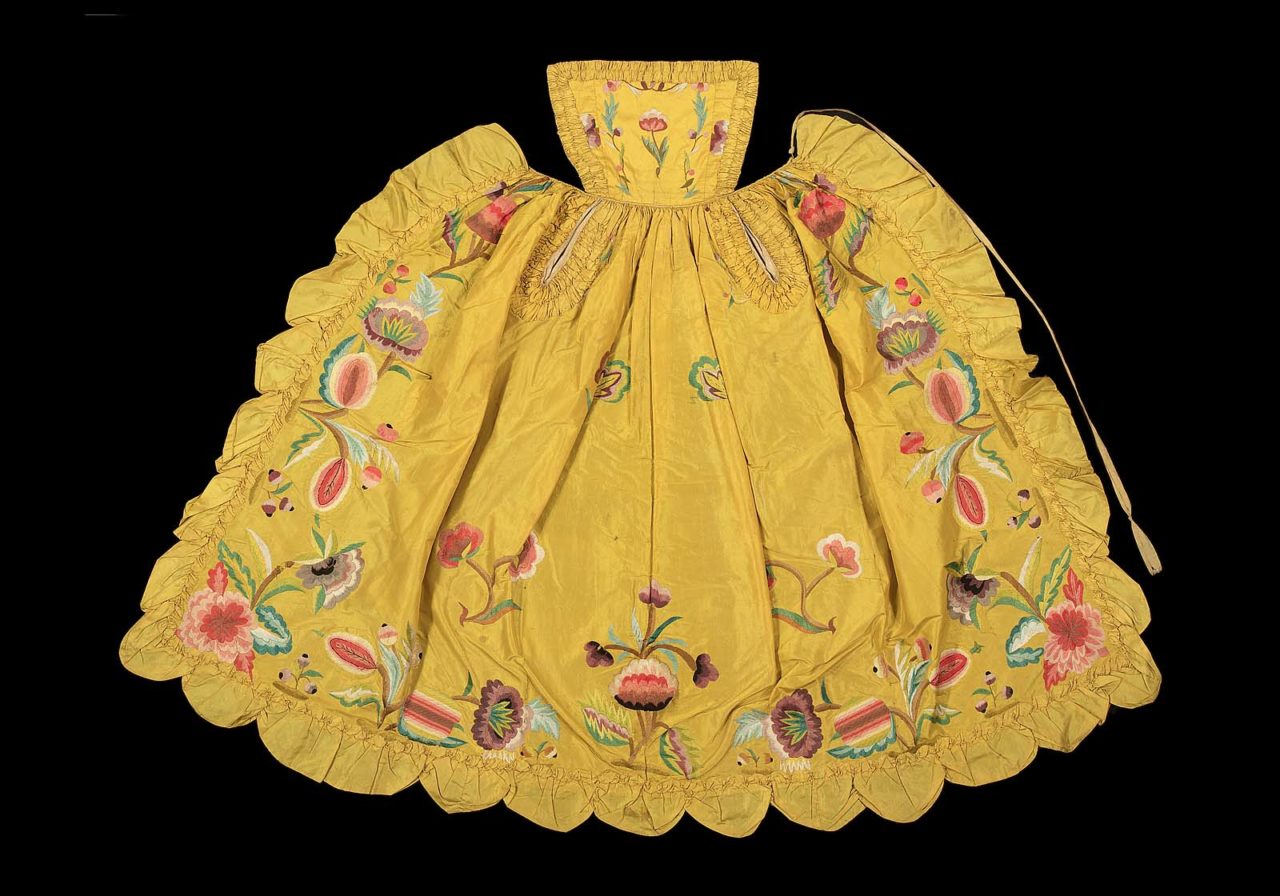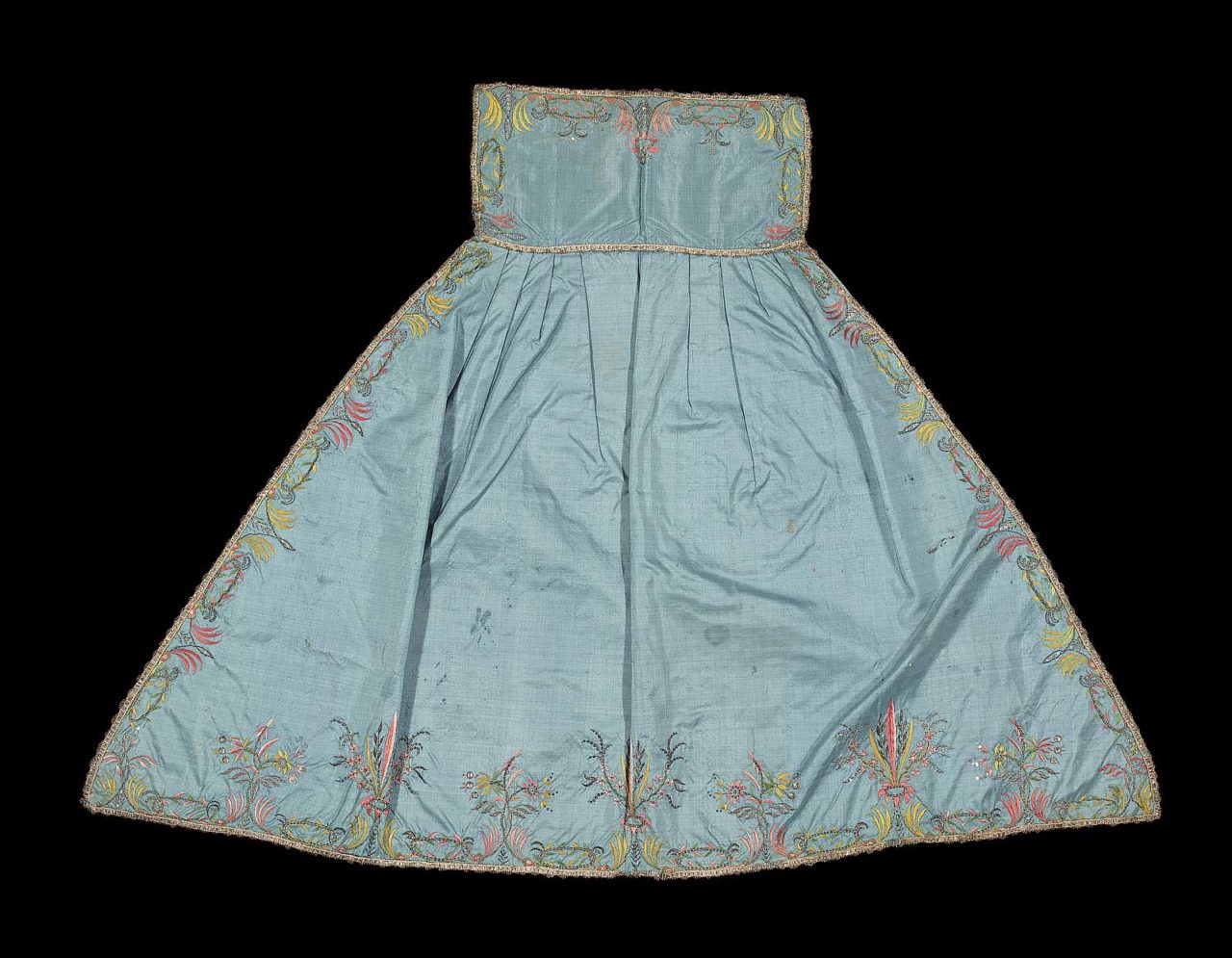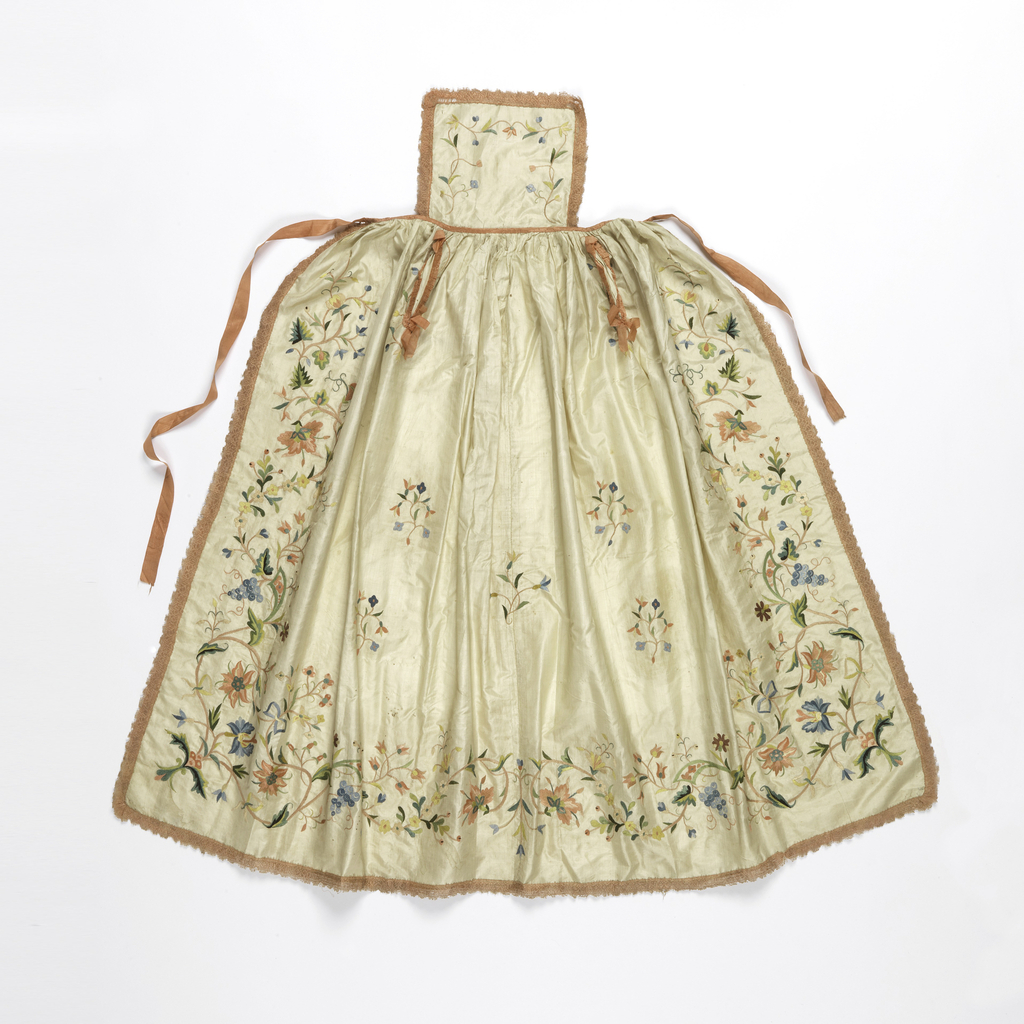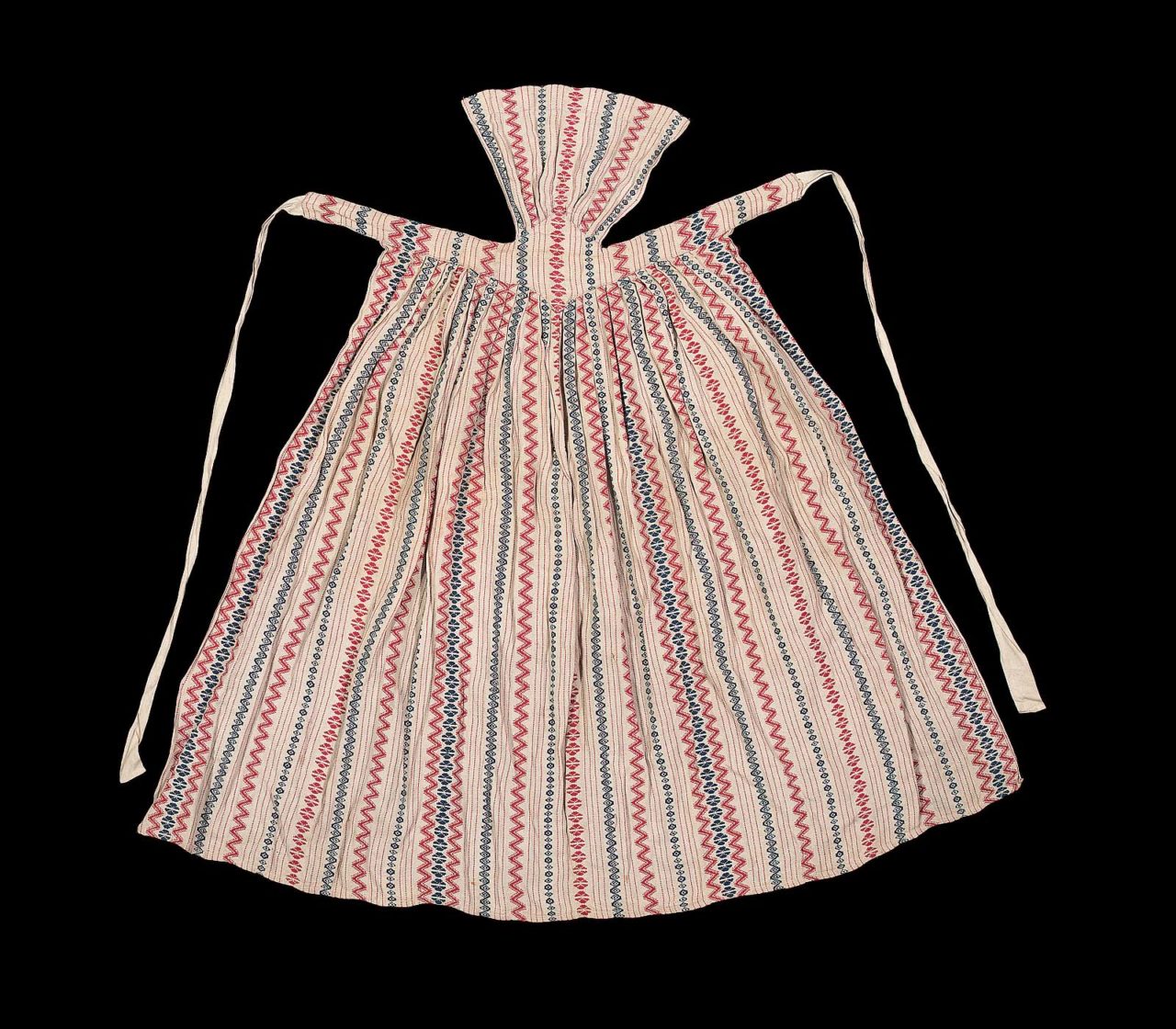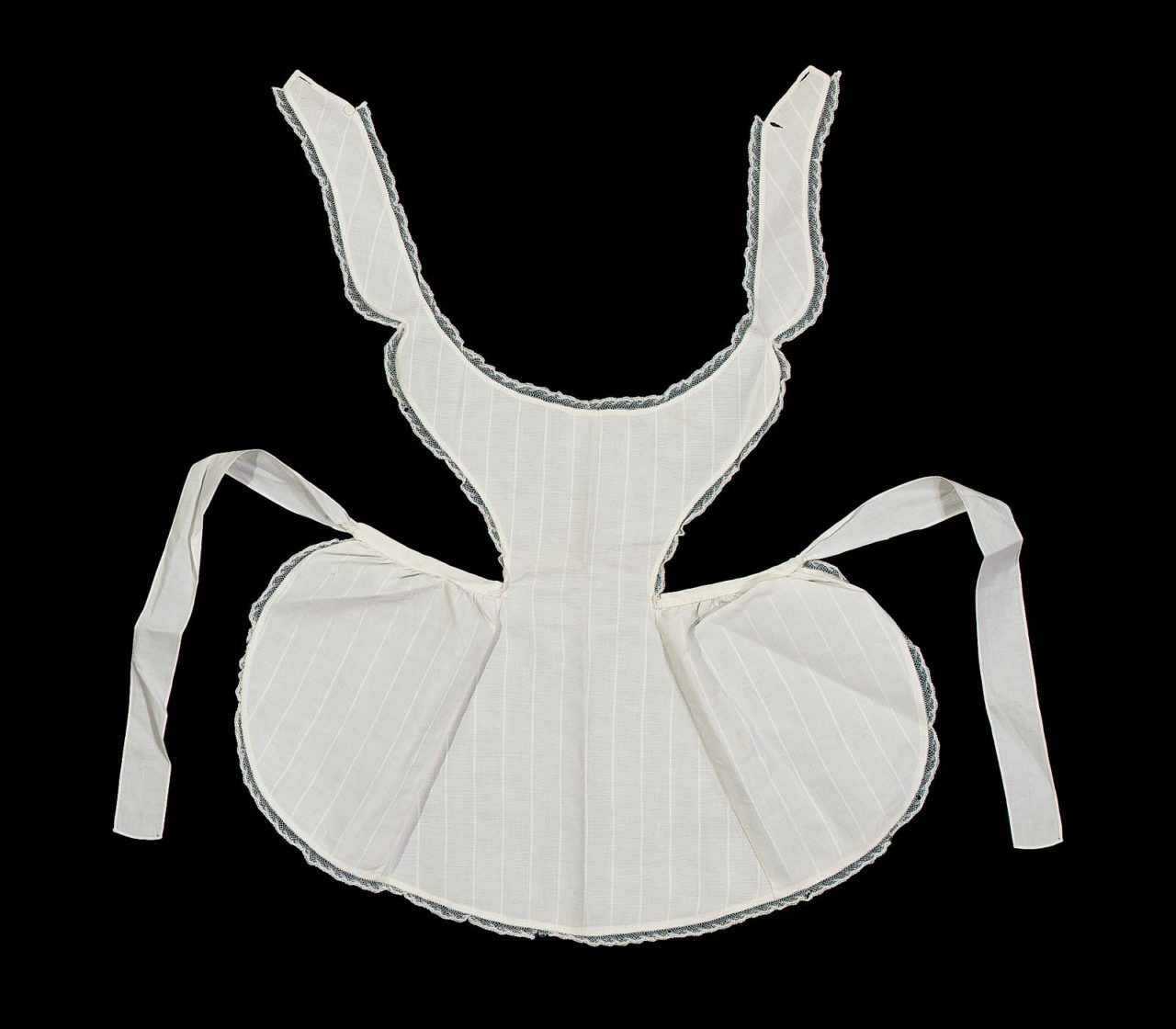A decorative, apron-like garment pinned to the front of dresses for both function and style.
The Details
R
egarding pinafores, Valerie Cumming in The Dictionary of Fashion History (2010) focuses on its later use as a child’s garment:
“A child’s washable covering of the front of the frock to protect it from becoming soiled; similar to an apron.” (157)
Phyllis Tortora of The Fairchild Books Dictionary of Fashion (2003) notes its common use by women of all ages:
“[A] sleeveless garment worn like an apron worn over dress by women and children as protection against soiling.” (367)
According to the Berg Encyclopedia of World Dress and Fashion (2010), pinafores had significance outside of their function:
“Women’s and children’s clothes became status symbols showing the level of prosperity provided by the man’s income from his work and business. In buying goods for their children, families also declared that they invested in the future….. The pinafore, originally intended to protect against dirt, also became a fashionable garment, decorated with frills and lace and with a hem that curved up at the sides so the dress underneath would be seen.” (462)
A vibrant early 18th-century pinafore with large floral embroidery and ruffle detailing is immediately attention getting (Fig. 1), whereas the 18th-century pinafore in Figure 2 functions as a more subtle status symbol, with the focus on the rich silk taffeta fabric and more delicate embroidery.
While many fashion-conscious pinafores featured subtle detailing and naturalistic embroidery on rich fabrics, as you can see in Figure 3, there were also more practical pinafores. The cotton twill pinafore in Figure 4 illustrates the more practical applications of pinafores among the working class.
Fig. 1 - Designer unknown (French). Embroidered apron, Late 17th Century. Silk taffeta with silk embroidery. linen pockets and bib lining.; 109 x 146 cm (42 15/16 x 57 1/2 in). Boston: Museum of Fine Arts, 43.1048. The Elizabeth Day McCormick Collection. Source: MFA
Fig. 2 - Designer unknown (French). Embroidered apron, Second half of 18th century. Silk taffeta with silk embroidery and silver metal trim and sequins; 68.5 x 93.5 cm (26 15/16 x 36 13/16 in). Boston: Museum of Fine Arts, 43.1036. The Elizabeth Day McCormick Collection. Source: MFA
Fig. 3 - Designer unknown (French). Apron (France), 18th century, 18th Century. Silk; 125.1 x 129.2 cm (49 1/4 x 50 7/8 in). New York: Smithsonian Design Museum, 1949-119-1. Source: Cooper Hewitt
Fig. 4 - Designer unknown (French). Farmer's apron, 18th Century. Cotton twill brocade; 98.8 x 113 cm (38 7/8 x 44 1/2 in). Boston: Museum of Fine Arts, 43.618. The Elizabeth Day McCormick Collection. Source: BFA
Fig. 5 - Designer unknown (American). Child's pinafore, About 1860. Cotton pique with linen valenciennes bobbin lace; 58 x 63 cm (22 13/16 x 24 13/16 in). Boston: Museum of Fine Arts, 52.226. Gift of Mrs. Dows Dunham. Source: MFA
Its Afterlife
Louis Vuitton drew inspiration from the pinafore cut to custom create a red carpet dress for Alicia Vikander (Fig. 6), through use of a fluttered sleeve and cross strap back.
Fig. 6 - Louis Vuitton (French). Alicia Vikander Golden Globes Awards, 2016. New York. Photograph by Getty Images. Source: Vogue
References:
- Calasibetta, Charlotte Mankey, Phyllis G. Tortora, Charlotte Mankey Calasibetta, and Publications Fairchild. The Fairchild Dictionary of Fashion. 3rd ed. New York: Fairchild Publications, 2003. http://www.worldcat.org/oclc/464613401.
- Cumming, Valerie, C. Willett Cunnington, Phillis Cunnington, Charles Relly Beard, and C. Willett Cunnington. The Dictionary of Fashion History. Oxford: Berg, 2010. http://www.worldcat.org/oclc/743409521.
- “Pinafore” Wikipedia. Accessed October 3rd, 2017. https://en.wikipedia.org/wiki/Pinafore
- Skov, Lise, ed. Berg Encyclopedia of World Dress and Fashion. West Europe. 8th ed. Berg Fashion Library. Oxford: Berg, 2010. http://www.worldcat.org/oclc/941308291.

